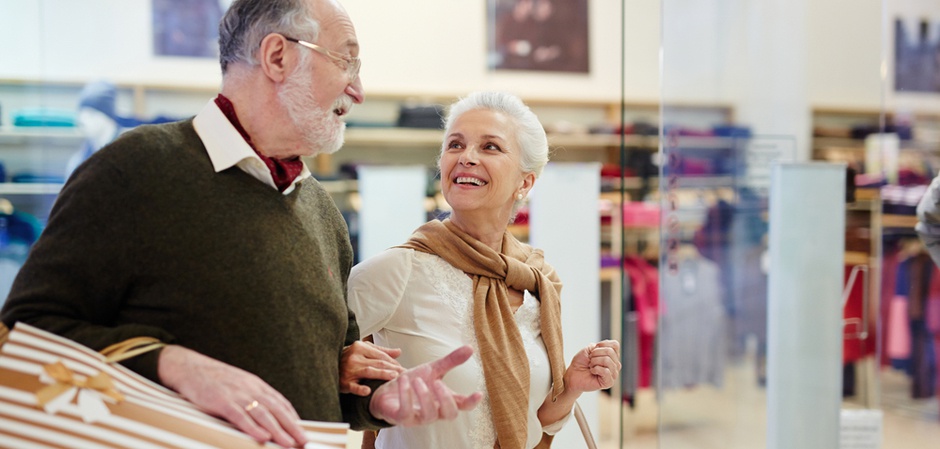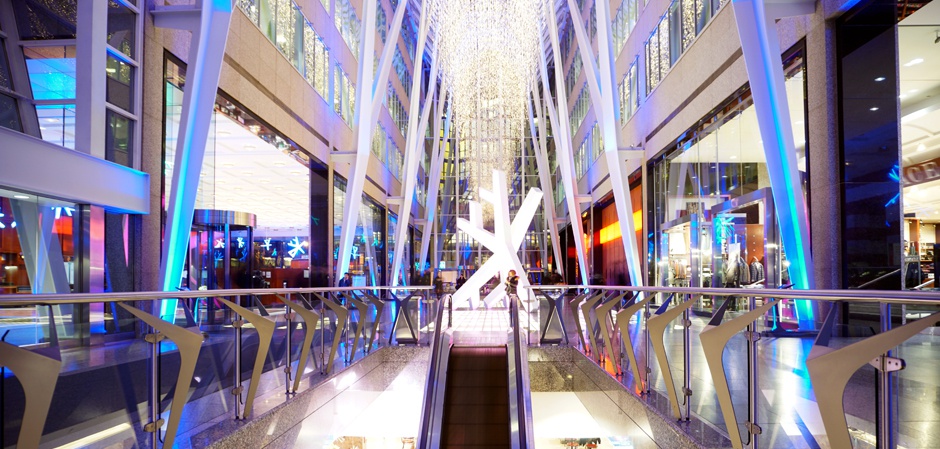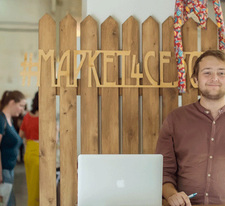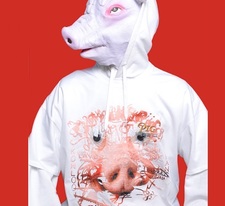Silver market
part 1 part 2 part 3 part 4 part 5
SHOPPING QUARTER
Polina Zhilkina, head of the retail consulting department of the retail space department of JLL, notes: historically, the main demand in the fashion industry has been distributed among active youth who follow fashion and most often update their wardrobe, young couples and families, more established buyers under the age of 60 and a very small mature audience, of which there are ten more years ago, it was very difficult to meet in a shopping mall.

"In our social space, the bulk of this mature audience, unfortunately, is the poorest group of the population, and it is quite difficult to imagine that an 80-year-old grandmother, especially a resident of a regional city, will walk around the mall for several hours picking up a new coat," I am convinced Ms. Zhilkina. "Deeply elderly people, who, as a rule, are most sensitive to price, are most often seen in those areas of shopping malls where there are grocery hypermarkets as anchors, much less likely in fashion galleries. There are tenants in shopping centers focused on this age group of buyers, but in the price segment "average" from large international brands like Marks &Spencer to small private entrepreneurs. More affluent age buyers purchase clothes and accessories in department stores (for example, HC, Stockmann), TSUM, corners and monobrand stores of the premium and luxury price segment (Gerry Weber, Marina Rinaldi), street retail stores.
There are no stores that would position themselves as brands for the older generation now, agrees Dina Postolenko, executive director of the Department of retail real estate at Colliers International. "However, now working women and men "who are over"are buyers of brands aimed at an audience of 35+ years," says Ms. Postolenko. – These stores differ from the mass market in that they feature more strict office suits, things of a classic cut. For example, brands such as Marks& Spencer, Lauren Vidal, M.Reason, offer a large selection of classic and stylish clothes that will successfully suit both the younger and older generation.

Brands that sell goods according to catalogs work most actively with the age audience, according to JLL. There is a particularly wide selection of these brands in Germany - Quelle/Otto, Bader, Apart. «In Russia, elderly people are used to going to stores with one goal – to buy what they need. In the Soviet Union, where they lived most of their lives, there was no practice of visiting shops for entertainment, shares Alexander Obukhovsky. – People went there to buy things or food, so for pensioners shopping malls are not a place of rest and pastime. They can only go there with their family (children, grandchildren) to, for example, have lunch at a restaurant. The perfect store for them is a hypermarket. There all the goods are in one place, you don't have to go far.
CBRE agrees: the main category of visitors to shopping malls are people aged 25 to 50, and shoppers aged 60+ can be visitors to supermarkets and hypermarkets. "As for the entertainment component, this format also almost does not offer any options to visitors aged 60+," says Mikhail Titov, Deputy director of CBRE's Market research department. – In regional cities, the situation is even more complicated. The older generation is rarely found even in district supermarkets.

According to Anna Panyukova, Director of Development of Prime Management, it is not customary to go even to a food court among the representatives of the older generation in Russia. "It is clear why, in the end, operators see young people as their target audience," the expert notes. "What can not be said about the countries of Europe, where, on the contrary, it is a whole tradition: pensioners and older people often gather in cafes and restaurants." Maxim Lisitsin, Director of Tenant Relations at ITD Properties, supports: his company observes a clear age distribution among retailers, developers and management companies in the regions. The bet is made more on the young able-bodied population aged 22 to 50 years, for whom the retailer brings goods that are in demand in this category. The developer, when designing a shopping center, takes into account the presence of certain shops, cafes, entertainment.

Sergey Lysov, head of the RealJet project department, however, reports that there is a "reversal" towards the older age group visitors in the Russian retail real estate market, but it occurred rather as a consequence of the last crisis. "The appearance in the shopping center of such concepts as post offices, medical centers, culinary studios, dance and acting schools, MFC, shifts the focus towards an older visitor," the expert reports. In this regard, management companies wishing to attract visitors of a wider age range should pay attention to the concept of daily visits, diversifying the usual set of services and services. In the USA, for example, there are not just shopping malls, but entire towns for the elderly with their own shops and infrastructure.
Mikhail Petrov also believes that such clients in Russia have only recently massively entered the zone of interests of the restaurant business, cosmetic services, and online commerce. "As for fashion, the development in this area is minimal," Mr. Petrov believes. There is definitely an increase in the number of online purchases, including clothing, by this category of buyers, but there are still practically no operators selling clothes in shopping centers with an emphasis on this audience. Moreover, after the crisis of 2008–2009, their number has not recovered. It cannot be argued that age-old buyers have no interest in clothes, but medicines and products have a different value. In civilized countries, a whole industry works for pensioners: the size of the European pension is low, on average 500-700 euros per month, but it is sufficient to maintain the usual consumer behavior formed over the years of living in a free economy.

Anna Panyukova calls Familia and Zenden among the brands popular with the older generation. "Another thing is that in the fashion segment, trends are no longer created at Fashion Weeks, but between shows, on the streets of European capitals," says Ms. Panyukova. Street fashion dictates trends to global brands and sets a strict framework: to progress and change quickly. Of course, the older generation simply does not keep up with all the trends, but experts in the fashion world, of course, need to focus on new trends. High-quality retail has come to the regions, to residential areas, and is gradually replacing market trade. In addition to the development of the market and the Internet, the behavior of our older generation is also corrected by changes in infrastructure. I mean sports: in gyms and fitness clubs, in parks (which in the last five years have been experiencing a real boom in development in Moscow and major cities), now we see pensioners there, which has never happened before. Maybe not to the same extent as the younger generation, but older people more often than 5 years ago began to buy sports clothes and shoes. This has also affected the concept of modern shopping malls: the share of "fashion" there is decreasing, but "sports" is growing, including due to the age audience.
To be continued.
Text: Ekaterina Reutskaya
Photo: shutterstock.com










